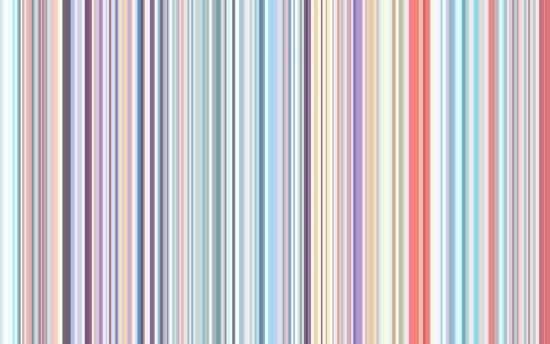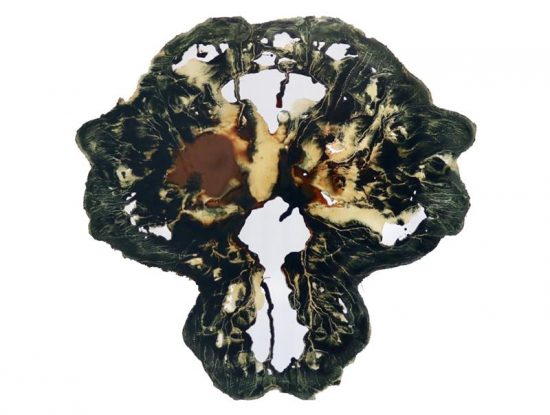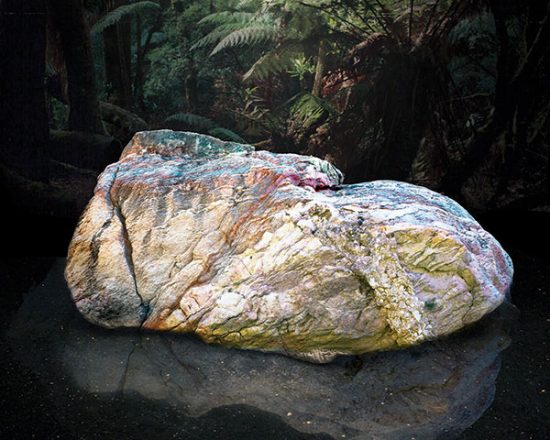Friday degustation: all cards accepted
Art Market: Beep Beep Beep

One thing you can count on in the Australian art market is the never-ending boosterism and hype. As to whether the optimistic predictions for Sydney Contemporary that it might add another $5 million on top of its 2018 record have yet to be announced, overall, the market is maintaining an equilibrium well below it’s heyday in the late aughts. So where is the market, really? According to two Melbourne University academics David Challis and Anita Archer, the market has flatlined. Writing for The Conversation they observe [>] “In the market parlance of boom and bust cycles, the Australian art market has long been leaning towards the latter. Over the past decade, it has performed very poorly. According to Australian Art Sale Digest, the combined volume of secondary market sales through Australian auction houses was $107 million in 2018. This amount has remained essentially unchanged for the last ten years and is 39% lower than its apex in 2007. Prices for Australian artwork in the secondary market have followed a very similar pattern. Commercial art galleries, traditional representatives of artists’ new work, are struggling to counteract declining foot traffic… “
Middle Class Art Collectors RIP

Meanwhile, in overseas secondary art markets awash with speculation, price ramping and celebrity artists doing an end run around the commercial gallery system, one notable trend has been the demise of the middle class collector. These aren’t just people who have a few nice works for their big McManison walls, but deep collections that survey important art movements. The celebrated example are Dorothy and Herbert Vogel, who collected conceptual and minimalist works and amassed a sizeable and important collection which they eventually donated to the National Gallery of Art in Washington rather than sell. They also had a documentary made about their modest lives and their great eyes for art. According to the Art Newspaper, that kind of collecting is now very rare, if not impossible [>] “…In an era of growing income inequality, in which the wealthy have embraced art—particularly contemporary art—as an alternative asset class, pushing gallery and auction prices ever-higher and hollowing out the middle market, is it still possible for professionals of relatively modest means to become serious collectors? “If they exist, I haven’t seen them,” says Douglas Walla, the founder of the New York-based contemporary dealers, Kent Fine Art. “In large part, the entry part of the market for young artists, where the price point would be very accessible, has been consumed by speculators,” Walla says, adding that much of this activity is currently focused on “artists of colour—long neglected—and older women artists of merit. The endgame is profit.”
Best Exhibition Title for 2019…

In what has to be the best exhibition title of the year, artist [>] Jenny Reddin debuts her contemporary abstraction under the banner The Very Stupid Man. Exhibiting her latest paintings at Melbourne’s Tacit Galleries, opening October 18, the connection between the title and the subject is fascinating [>] “The works are reminiscent of fragments, scraps and fossils of very early life at a time when the earth was pristine. There is an inverse correlation between the expansion of human intelligence, developments in technology, improvements in the standard of living, and the degradation of the earth. Prehistoric man was stupid because he only knew enough to survive. Time will tell whether modern man is clever enough to reverse the damage that our prosperity has caused…”
Borrowed Landscapes

inkjet print, edition 10, 60 × 75cm.
Dream Dance: The Art of Emsh
[>] “Dream Dance: The Art of Ed Emshwiller is the first major monographic exhibition of the artist’s groundbreaking work in film, video, and visual art. With an immensely diverse body of creative work, Ed Emshwiller (1925-90) is perhaps one of the most significant yet under-recognized artists of the latter half of the 20th century. Emshwiller’s career spanned abstract expressionist painting, commercial illustration, film, video and computer art, and collaborations with dancers, choreographers, and composers. Dream Dance includes the preservation of two of Emshwiller’s earliest films, Dance Chromatic (1959) and Lifelines (1960), which will be screened at Lightbox along with 19 of his other films—some of which have never been publicly presented in Philadelphia—as well as notable films by other filmmakers for which he served as cinematographer. A concurrent exhibition at the Rosenwald-Wolf Gallery highlights Emshwiller’s visual and fine art background, including video works, early paintings, notes, sketches, ephemera, and many early science fiction cover paintings. Dream Dance is a full scale investigation of the artist’s legacy, presenting his multidisciplinary oeuvre to a new generation of audiences.”
Assorted Links
Pointless appointments pointing to apparent perfidy: [>] Tony Abbott appointed to board of Australian War Memorial
Aichi Triennale exhibition [>] may trigger legal battle, meanwhile [>] rally held against govt. decision on cultural affairs agency’s decision to withhold subsidies for the Triennale…
The Gray Market [>] Why Opaque Pricing in the Gallery Sector Makes Museum Collections Less Diverse
“From a person dropping old TV sets onto people’s doorsteps while wearing one on their head, to a cougar slinking across a porch, to a 5-year-old reciting the Pledge of Allegiance [>] Ring is documenting facets of suburban existence that once went unnoticed…”
“Hertzian Landscapes [>] is a new interactive installation that visualizes large swaths of radio spectrum as a realtime electromagnetic landscape.”
“A recent protest at the Whitney that drummed out a vice chairman exposed the symbiotic, but potentially problematic, relationship that museums have with some trustees…” [>] New Scrutiny of Museum Boards Takes Aim at World of Wealth and Status
What the Hell Was Modernism? [>] The Museum of Modern Art tries to open itself up.
